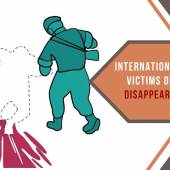World Hepatitis Day (July 28)

World Hepatitis Day, on July 28, is an opportunity for everyone to step up national and international efforts on hepatitis.
It is also an opportunity to take action and highlight the need for a greater global response as outlined in the WHO's Global hepatitis report of 2017.
July 28 is the birthday of Nobel-prize winning scientist Dr Baruch Blumberg, who discovered hepatitis B virus and developed a diagnostic test and vaccine.
The celebration is intended to achieve the global elimination of Hepatitis by 2030.
Hepatitis is an inflammation of the liver, most commonly caused by a viral infection.
There are five main hepatitis viruses, referred to as types A, B, C, D and E. These are of greatest concern because of the illness and death they cause and the potential for outbreaks and epidemic spread.
Chronic hepatitis B and C are life-threatening infectious diseases that cause serious liver damage, cancer, and premature death.
More than 300 million people are infected with the hepatitis B virus or the hepatitis C virus.
Hepatitis B and C are silent epidemics, hitting children and marginalized populations the hardest, including people who inject drugs, indigenous peoples, prisoners, men who have sex with men, migrants and people living with HIV/AIDs.
Globally, 90 percent of people living with hepatitis B and 80 percent living with hepatitis C are unaware they are living with the disease, resulting in the real possibility of developing fatal liver disease or liver cancer at some point in their lives and in some cases, unknowingly transmitting the infection to others.
With the availability of effective vaccines and treatments for hepatitis B and a cure for hepatitis C, the elimination of hepatitis is achievable, but greater awareness and understanding of the disease and the risks is a must, as is access to cheaper diagnostics and treatment.
Ensuring that no one is left behind and that policymakers’ deliver on their commitment will be key to achieving elimination.
Data from the World Health Organization show an estimated 257 million people living with chronic hepatitis B and 71 million people living with chronic hepatitis C worldwide.
Viral hepatitis causes more than one million deaths each year. While deaths from tuberculosis and HIV have been declining, deaths from hepatitis are increasing.
The five hepatitis viruses – A, B, C, D, and E – are distinct and can spread in different ways, affect different populations, and result in different health outcomes.
Hepatitis A: Hepatitis A usually spreads when a person unknowingly ingests the virus from objects, food, or drinks contaminated by small, undetected amounts of stool from an infected person. In the United States, hepatitis A is most commonly spread from close personal contact with someone infected, either through having sex, caring for someone who is ill, or using drugs with others. Hepatitis A does not cause a chronic, lifelong infection and is rarely fatal, but it can cause serious symptoms. Vaccination is the best way to prevent hepatitis A. However, good hand hygiene, improved sanitation, and increased food safety can also prevent hepatitis A.
Hepatitis B: Hepatitis B virus is most commonly spread from an infected mother to her baby at birth and among unvaccinated children. People can also become infected from contact with blood and other body fluids through injection drug use, unsterile medical equipment, and sexual contact. Hepatitis B can range from a mild illness lasting a few weeks to a serious, chronic illness. If infected at birth or during early childhood, people are more likely to develop a chronic infection, which can lead to liver cirrhosis or even liver cancer. Getting the hepatitis B vaccine is the most effective way to prevent hepatitis B. WHO recommends that all infants receive the hepatitis B vaccine as soon as possible after birth, followed by 2 to 3 additional shots. In many parts of the world, widespread infant vaccination programs have led to dramatic declines of new hepatitis B cases.
Hepatitis C: The hepatitis C virus is spread through contact with blood from an infected person. People can get infected through sharing any equipment used to prepare and inject drugs and through unsafe medical injections and other medical procedures. Hepatitis C can also spread, although rarely, from an infected mother to her child at birth. Hepatitis C can cause both acute and chronic infections, but most people who get infected develop a chronic infection. A significant number of those who are chronically infected will develop liver cirrhosis or liver cancer. With new treatments, over 90% of people with hepatitis C can be cured within 2 to 3 months, reducing the risk of death from liver cancer and cirrhosis. The first step for people living with hepatitis C to benefit from treatments is to get tested and linked to care. There is currently no vaccine for hepatitis C, but research in this area is ongoing.
Hepatitis D: The hepatitis D virus is spread through contact with infected blood. Hepatitis D only occurs in people who are already infected with the hepatitis B virus. People who are not already infected with hepatitis B can prevent hepatitis D by getting vaccinated against hepatitis B.
Hepatitis E: The hepatitis E virus is spread mainly through contaminated drinking water. Pregnant women infected with hepatitis E are at considerable risk of mortality from this infection. Hepatitis E is found worldwide, with the highest number of infections in East and South Asia. Improved water quality and sanitation can help prevent new cases of hepatitis E.
Radio Veritas Asia (RVA), a media platform of the Catholic Church, aims to share Christ. RVA started in 1969 as a continental Catholic radio station to serve Asian countries in their respective local language, thus earning the tag “the Voice of Asian Christianity.” Responding to the emerging context, RVA embraced media platforms to connect with the global Asian audience via its 21 language websites and various social media platforms.












